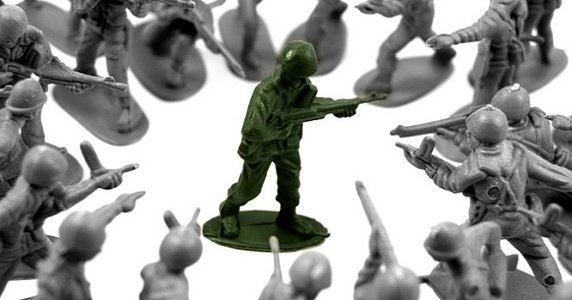The Battle of Marathon, 490 BCE
The Battle of Marathon is one of the earliest recorded battles in history and took place in 490 BCE. In September of 490 BCE, some 600 Persian ships, carrying more than 20,000 Persian soldiers landed on Greek soil. The Greeks were unprepared for the invasion, and were only able to rally a force of 10,000 hoplite warriors. The two armies met in Marathon, some 26 miles north of the city of Athens.
The Greek General Miltiades ordered the troops to form a line equal to that of the Persian invaders and to charge into the fight, maintaining the line, at a full run. The strategy was successful. While the Greek line weakened in the middle, they were able to surround the Persian troops. Greek losses numbered only 192 hoplite warriors, while the Persians lost some 6,400 troops. The remaining Persian soldiers retreated.

Outnumbered two-to-one, the Greeks opted for a daring and successful strategy to overtake a larger force, and succeeded with only minimal losses, while inflicting serious harm on their opponent. On their ships, the Persians set out for Athens; however, the Athenian force reached the city before the Persian ships, and quickly turned away Persian forces.

